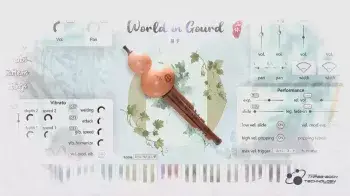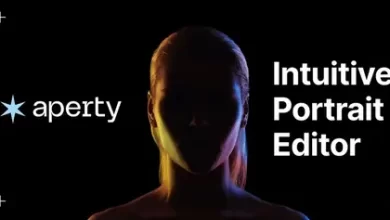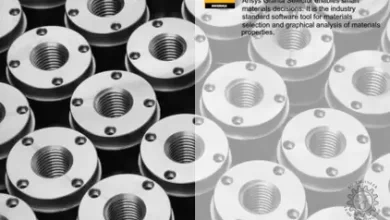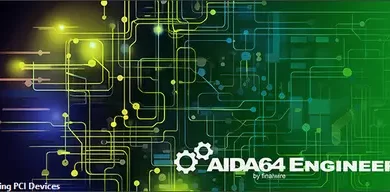BioSolvetIT SeeSAR 13.1.1 Win x64
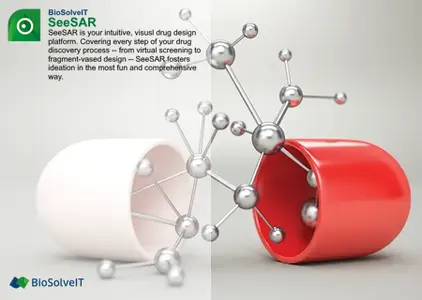

Free Download BioSolvetIT SeeSAR 13.1.1 | 147.8 mb
BioSolveITnas releasedSeeSAR 13.1.1 ‘Midas’is an interactive and visual molecular modeling and drug design platform for compound evolution and priorization backed up by science, is intended as an interactive tool for designing/improving ligands for drug discovery
Owner:BioSolveIT GmbH
Product Name:SeeSAR ‘Midas’
Version:13.1.1
Supported Architectures:x64
Website Home Page :www.biosolveit.de
Languages Supported:english
System Requirements:Windows *
Size:147.8 mb
.
What’s new in SeeSAR 13.1 ‘Midas’
The SeeSAR 13.1 update of ‘Midas’ comes with a plethora of augmentations, quality-of-life improvements and novel features.
–Quantum leap for covalent docking:The highly popular feature now supports the automatic transformation of covalent warheads into their target-bound form. Load your molecules into the docking mode, conveniently select the covalent residue you would like to target and start your covalent docking run. No need of pre-processing the ligands or for SMILES manipulation. Covalent docking has never been easier!
–Support of large-scale docking:Docking can now be processed on an external machine with the Remote Docking Mode. Coupled with the new BioSolveIT platform HPSee, SeeSAR enables you to streamline your virtual screening campaigns.
– Additional customizable visualization of the target structure. Color and display residues, chain, ligands in the way you need it!
– And many more…
Improvements to covalent docking
– Automatic detection of covalent warheads: SeeSAR now detects 36 most commonly used covalent warheads from input molecules and automatically transforms them to be used for covalent docking resulting in the creation of covalent protein-ligand complexes.
. The detection and transformation take place in the background once a covalent docking run has been initiated.
. Users can now avoid the tedious steps of having to manually edit molecules and adding linker atoms [R] at the appropriate location on input molecules.
. Molecules with linkers [R] are still supported for covalent docking as per usual.
– Automatic detection protein residues suitable for covalent docking:
. SeeSAR now detects the residues Cys, Ser, Thr, Tyr, Lys, Gln and Asn in the binding site and prepares them to be anchors for covalent attachment of molecules via docking, in the Docking Mode.
. Any residue (from the list above) suitable for covalent docking in the binding site is highlighted by a blue translucent capsule on the side-chain at which the covalent attachment could potentially happen.
. To select one of the residues for covalent docking, a single click on the corresponding capsule is sufficient. The assignment of the residue for covalent docking is visually indicated by the color of the capsule changing to pink.
. Note: SeeSAR will not determine the compatibility between the selected residue and the molecules in the docking library during the docking. All molecules from the docking library will be docked on the chosen residue.
Large-scale docking on external hardware: Introducing the external Docking Mode.
– The Docking mode switch can now be toggled to the right to find SeeSAR’s new mode for running large scale docking calculations external hardware such as a single powerful machine, or a cluster.
– The prerequisite for the successful usage of this mode is the configuration of HPSee, BioSolveIT’s high-performance computing framework, which is also introduced along with this release.
– Once HPSee has been installed on the external server (remote machines, clusters), access to the server can be configured via the newly added “Web Service” option within SeeSAR’s System Settings.
– The mode accepts a variety of inputs including molecules added from other modes, molecules loaded from external files, and also libraries uploaded to the external server via HPSee.
– All docking runs on this mode are run on the external hardware configured, and once the run has been initiated, users can switch to other modes in SeeSAR to carry out other tasks.
– HYDE optimization of the docked poses can also be done on the server if the user wishes by turning on the corresponding automatic calculation in the “Calculations” option in the System Settings.
– Note: Once a docking run has been initiated on this mode, it is recommended that the binding site of the protein used is not changed.
– Users are informed of the status of an ongoing docking run via a progress indicator on the play button.
– Users can cancel a run that has been started by clicking on the orange button which both terminates the run and deletes all results from the server.
– Users are informed about completion, of their initiated runs via appropriate notification messages delivered via the Message Center.
Usability improvements: Enhanced control on color and visibility.
– The Sequence View from the existing versions of SeeSAR is now more aptly named as the “Target View Control” panel. This section offers improved usability to control the visibility and color of the different components of the target macromolecules loaded into SeeSAR.
– The self-explanatory dropdown items “Visibility” and “Color” dictate which components on the target i.e., residues, chains, molecules, metals, and surfaces on which the intended color or visibility assignment is to take place.
Miscellaneous improvements
– When loading proteins into the Proteins or the Protein Editor mode, SeeSAR checks completeness of the structure and warns the user via an indicator on the protein entry on the table if the structure is incomplete
– A warning triangle on the PDB input field is shown if SeeSAR detects that the PDB info database is out of date.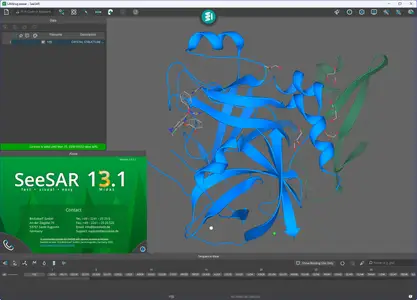
SeeSARis your intuitive, visual drug design platform. Converting every step of your drug discovery process from virtual screening to fragment-based design. SeeSAR fosters ideation in the most fun and comprehensive way. SeeSAR functionalities: docking simulation, scaffold replacement, fragment growing, affinity evaluation, molecular surface, torsion quality evaluation, small molecules superposition, ligand property and ADME property calculation etc.
Introduction to SeeSAR: Drug Discovery with ‘Midas’
In this BioSolveIT workshop, we embark on a journey into the world of the drug discovery dashboard SeeSAR: A cutting-edge tool that has undergone a remarkable power gain over the years. During this workshop, we will offer a comprehensive introduction to its various operational “modes”. Modes, pleasingly designed, cover a wide array of tasks such as molecule editing, docking, and target-ligand complex assessment. Additionally to the structure-based methods, we will discuss how SeeSAR can facilitate ligand-based drug discovery (LBDD).
BioSolveIT GmbHis a Bio- and Cheminformatics company. Its core businesses are software, services, and research collaborations. With three founders in academia, BioSolveIT has its backbone in research and catalyzes the genesis of products off of basic research successes. Best known is its molecular docking software FlexX. With the FTrees program BioSolveIT took leadership in ultra-fast virtual high throughput screening using a fragment reassembly based approach.

